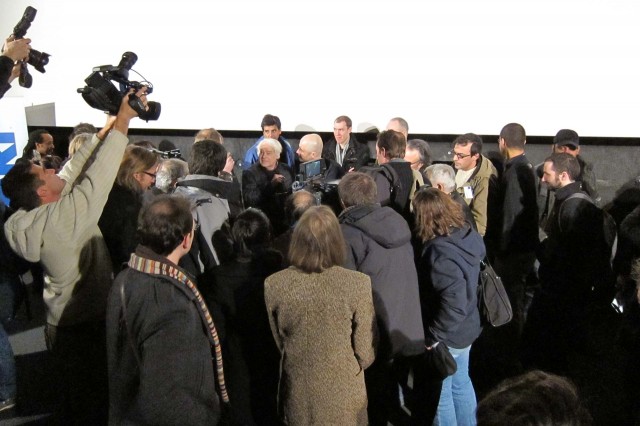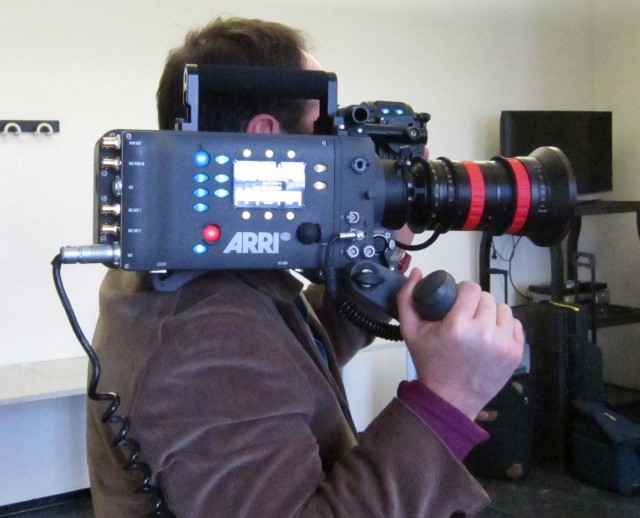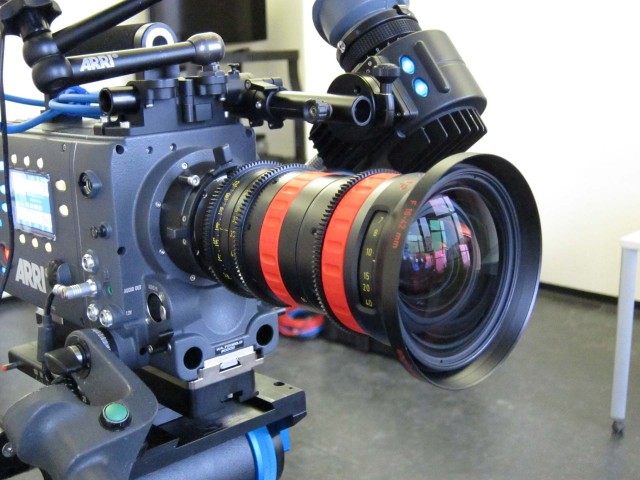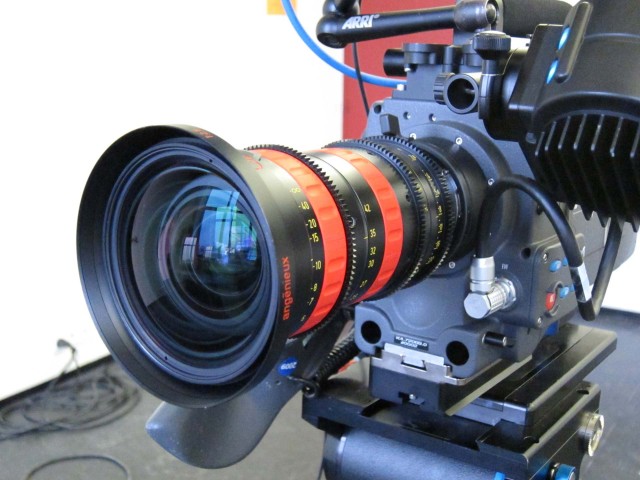The first working prototype of ARRI’s Alexa was shown “out of competition” at the AFC Micro Salon last week in Paris. Introduced by ARRI General Manager Stephan Schenk and Cinematographer Frank van Vught, this is the first of the three Alexa siblings–the A-EV (Electronic Viewfinder). Last seen (by me) at IBC as mockups and breadboards, this was the real deal. The official launch will be at NAB.
What astonished me was how easy it was to work with Alexa. Dare I say it? Menus easy enough to navigate that even a cinematographer can understand. But seriously, I was able to learn how to use the camera in about 5 minutes. The commands and buttons are familiar, like a film camera: FPS, Shutter, EI (Exposure Index, ISO), and WB (Color Temperature). Real buttons control each function; you don’t have to drill deep into menus. The display is intuitive, and you can see all your settings at once.
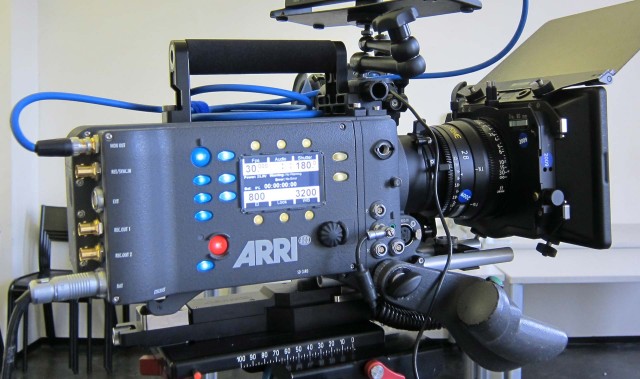 Alexa sits comfortably on the shoulder. Lightweight support rod receptacles are molded into the front of the casting. You’ll be able to use a 235-style baseplate or a video-style mounting plate. Shoulder pads attach to the bottom. The viewfinder is adjustable for almost any camera operator’s comfort. I think there will be a handgrip rosette on the camera left side, like the 16SR–which should make this a symmetrical camera that works equally well handheld on either left or right shoulder.
Alexa sits comfortably on the shoulder. Lightweight support rod receptacles are molded into the front of the casting. You’ll be able to use a 235-style baseplate or a video-style mounting plate. Shoulder pads attach to the bottom. The viewfinder is adjustable for almost any camera operator’s comfort. I think there will be a handgrip rosette on the camera left side, like the 16SR–which should make this a symmetrical camera that works equally well handheld on either left or right shoulder.
People were wondering whether Angénieux Optimo Rouge lenses would fit on Alexa. They do. That’s Angénieux CEO Philippe Parain, below. I wonder whether ARRI-Blue rubber rings will be available as a future option, offering a choice of Optimo Rouge or Optimo Bleu? The significant thing about Optimo DP (Rouge or Bleu) lenses on the Alexa is how well they balance for handheld shooting. The DP 16-42 gets you close (and wide) to medium; the DP 30-80 covers medium to portrait CU angles. Of course, the original Optimo 15-40 and 28-76 fit Alexa just as well–the difference is cost and quality.
The color electronic viewfinder adjusts to almost any viewing position. I understand the mounting system may be modified slightly from this picture. Notice the lightweight support rod receptacles below.
There may be a handgrip rosette on the camera left side. The buttons might be moved higher.

